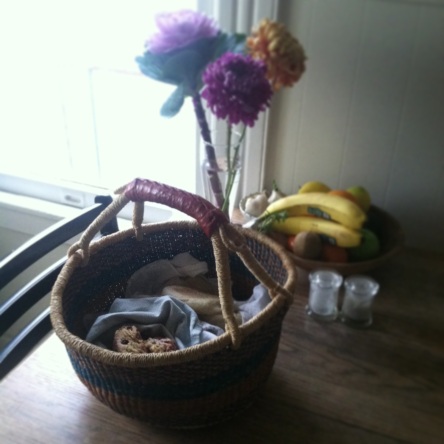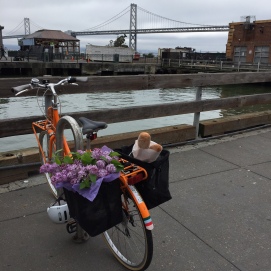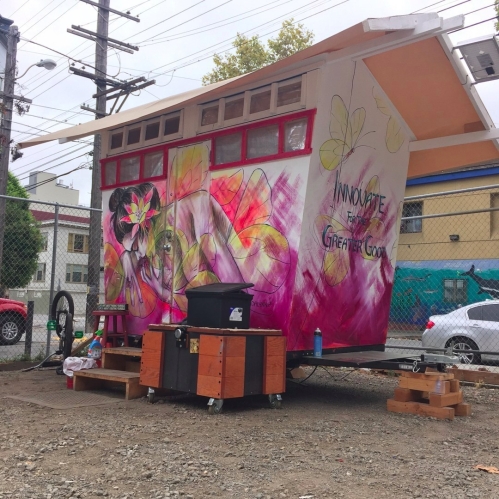 As the Earth makes another trip around the sun, we find ourselves arriving once again at that day for collectively celebrating and honoring her awesomeness. And it is on this occasion that I’ve chosen to share a little tale about how we can become mindful and respectful of her resources while we connect with one another.
As the Earth makes another trip around the sun, we find ourselves arriving once again at that day for collectively celebrating and honoring her awesomeness. And it is on this occasion that I’ve chosen to share a little tale about how we can become mindful and respectful of her resources while we connect with one another.
The story begins with a visit to southern Germany shortly after my partner and I started dating. One of the things that struck me was the sight of women carrying baskets to and from the village bakery for their daily loaves and pretzels. There was something so old world and quaint about these containers, while at the same time, their use made so much modern-day environmental sense. They were decorative, multi-functional, and they eliminated the need for paper bags and the accompanying accumulation and storage of the latter.
 Back at home, I kept re-noticing the beautiful Ghanaian Bolga baskets I coveted so much on the arms of my fellow farmers market shoppers. Oh, how much I yearned to have one, but it was impractical to walk to and from the market with a full and often heavy load hanging from my arm. Those baskets are great for someone who walks just a couple of blocks or drives. Our forays to the farmers market are on foot, by public transit, or by bicycle. Sturdy reusable bags or a backpack are ideal. Once I started pedaling there, panniers became the carrier option of choice.
Back at home, I kept re-noticing the beautiful Ghanaian Bolga baskets I coveted so much on the arms of my fellow farmers market shoppers. Oh, how much I yearned to have one, but it was impractical to walk to and from the market with a full and often heavy load hanging from my arm. Those baskets are great for someone who walks just a couple of blocks or drives. Our forays to the farmers market are on foot, by public transit, or by bicycle. Sturdy reusable bags or a backpack are ideal. Once I started pedaling there, panniers became the carrier option of choice.
The idea of integrating a basket into my life never left my mind. One day I had an aha moment: we visit the bakery down the street with enough regularity to warrant a designated receptacle for transporting and storing our purchases. Finally, I had a reason to acquire a fair trade Bolga basket! Beyond bread-like things, it gets used for transporting goods to parties and other social gatherings.
But let’s get back to the bakery for a moment. More often than not, the worker-owners at the bakery cooperative down the street express gratitude whenever we bring and use our basket. A brief conversation often ensues at the register while the transaction is completed. They wish more people saw the benefit of bringing their own bag or container, and all we can say them is that we hope our basket will inspire and motivate others who see it in action. One cashier, complimenting me on the basket, told me it reminded her of the market baskets used Mexico where she grew up. We chatted about that for a bit. It was then and there that I realized the basket is more than a device for carrying or storing things. It’s also a catalyst for communicating with others and sharing our stories. In fact, whenever he sees me with the basket in tow, the owner at the corner cafe gets a kick out of what he calls my mushroom hunting basket. I hadn’t thought about becoming a mushroom hunter, but there’s an idea…



 As the Earth makes another trip around the sun, we find ourselves arriving once again at that day for collectively celebrating and honoring her awesomeness. And it is on this occasion that I’ve chosen to share a little tale about how we can become mindful and respectful of her resources while we connect with one another.
As the Earth makes another trip around the sun, we find ourselves arriving once again at that day for collectively celebrating and honoring her awesomeness. And it is on this occasion that I’ve chosen to share a little tale about how we can become mindful and respectful of her resources while we connect with one another. Back at home, I kept re-noticing the beautiful
Back at home, I kept re-noticing the beautiful 
